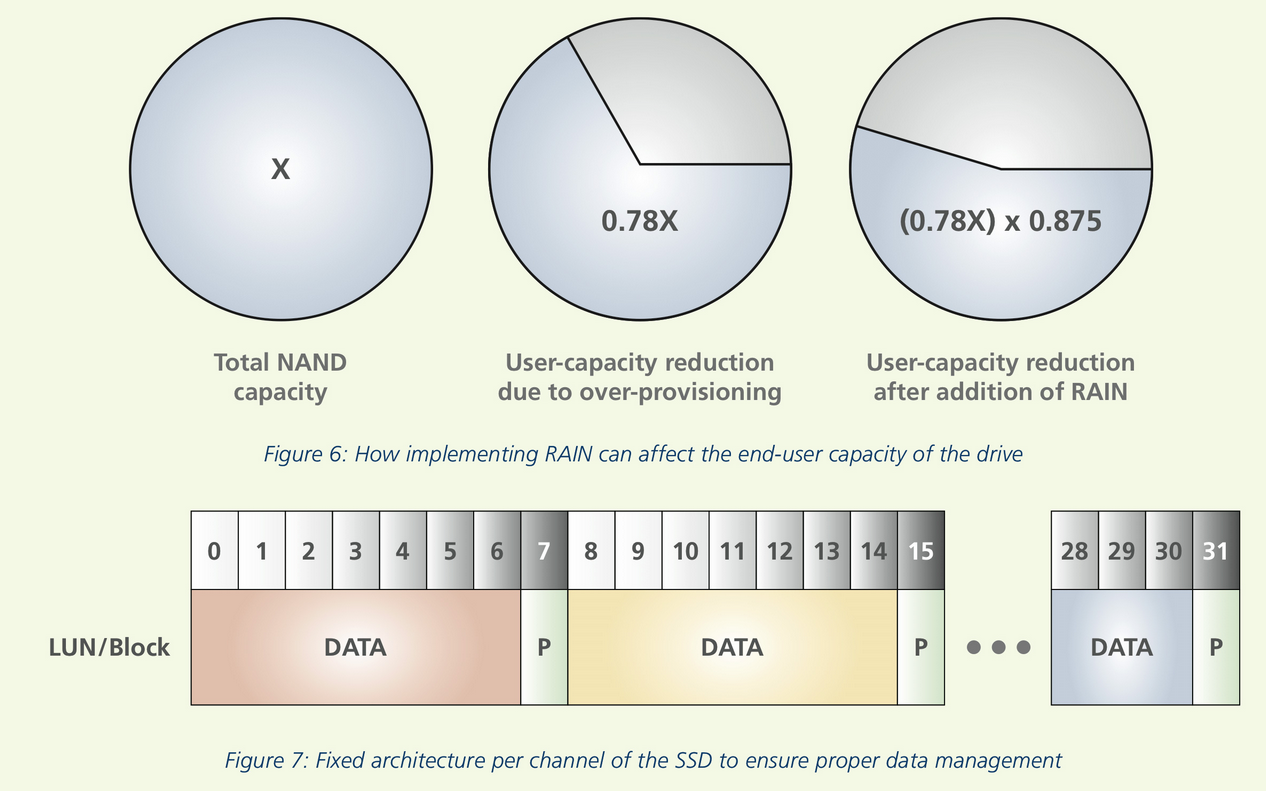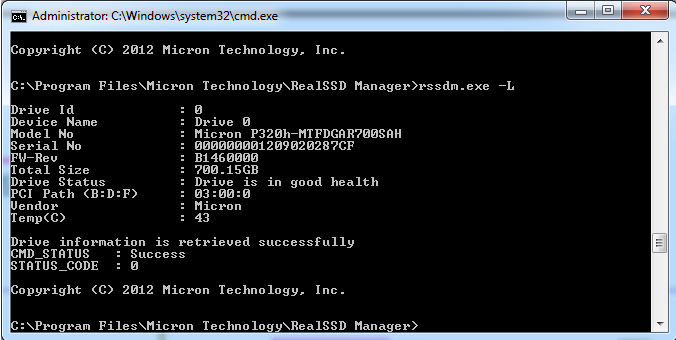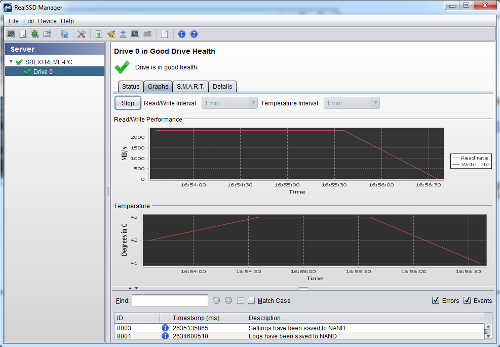Micron RealSSD P320h Review: A PCIe Drive Capable Of 3.2 GB/s
Announced earlier this year, Micron's RealSSD P320h PCI Express-based SSD promises to be an enterprise workhorse. A custom controller, single-level cell NAND, amazingly low latency, stellar random I/O, and incredible endurance combine to blow us away.
Micron's Firmware And Monitoring Software
As we mentioned on the previous page, the 700 GB RealSSD P320h actually has 1 TB of on-board SLC NAND. Not all of the unaccounted-for memory is used for over-provisioning, as you might expect. Rather, Micron's RAIN (Redundant Array of Independent NAND) technology takes up 128 GB (12.5%). From there, the company imposes ~22% of total capacity for over-provisioning. This takes the total usable capacity down to ~650 GB.
RAIN is a way of creating parity at the logical storage unit level. Stated most simply it's a 7+1 RAID 5 configuration. For every seven blocks that are written, a single parity element is calculated.
This calculation is done in hardware, in real-time, and in the background, requiring no user/application interaction. Beyond ECC, which the P320h also supports, RAIN allows the card to recover from physical NAND failures. If there is problem, the P320h logs that event and makes it viewable by way of the RealSSD Manager. You can also communicate with the P320h through a fully-featured CLI application.
The RealSSD Manager is a nice tool that allows system administrators to quickly check the health of the drive without creating custom scripts or memorizing cryptic command line switches. Not only can you view the typical SMART (Self Monitoring and Analysis Reporting Technology) parameters, but you can also view live performance stats, media wear, and thermal readings.
Get Tom's Hardware's best news and in-depth reviews, straight to your inbox.
Current page: Micron's Firmware And Monitoring Software
Prev Page Micron's 32-Channel Controller Simplifies PCIe-Based SSDs Next Page Test Setup, Benchmarks, And Methodology-
mayankleoboy1 i dont see this as the future of consumer SSD's, just like a 16 core CPU is not the future of consumer CPU's.Reply -
bawchicawawa mayankleoboy1i dont see this as the future of consumer SSD's, just like a 16 core CPU is not the future of consumer CPU's.Reply
Such an apples to oranges comparison... -
memadmax Eliminating the SAS controller is the logical way to have these pci-e based ssd drives...Reply
Kinda surprised something like this didn't come out first as it makes more sense.... -
mayankleoboy1 bawchicawawaSuch an apples to oranges comparison...Reply
really ? Increasingly, performance is basically dependent on extracting parallelism. Whether in storage or in CPU performance.
Desktop/Mainstream users just dont do so much in parallel that they can fully use all the hardware. -
JOSHSKORN mayankleoboy1i dont see this as the future of consumer SSD's, just like a 16 core CPU is not the future of consumer CPU's.I see a purpose for 16 core processors. How are we going to otherwise be able to run Crysis 6?Reply -
mayankleoboy1 JOSHSKORNI see a purpose for 16 core processors. How are we going to otherwise be able to run Crysis 6?Reply
Use a 5000 core GPU ? -
youssef 2010 ArticleAlthough read performance is out of this world, the RealSSD P320h's write performance isn't nearly as spectacular. That's not to say the drive doesn't do well; it's just not as impressive after looking at those massive read numbers. read performance was out of this world, the write performance wasn't nearly as spectacular. Now, that's not to say that the P320h doesn't perform well, it's just not as impressive as the read resultsReply
????????!!!!!!!!!!! -
abbadon_34 After all these years it's nice to see the OCZ Revo at least mentioned. Considering a bootable PCI-E x4 SSD can be had for under $200 for over 5 years now, and is on it's 4th+ generation, one can only wonder why it's been ignored for so long.Reply -
Marcus52 Micron deserves a pat on the back for this one!Reply
Thanks for the review, love to see this kind of advancement and a peak into the future new hardware brings with it, even if it isn't directly applicable to me at this point in time.



